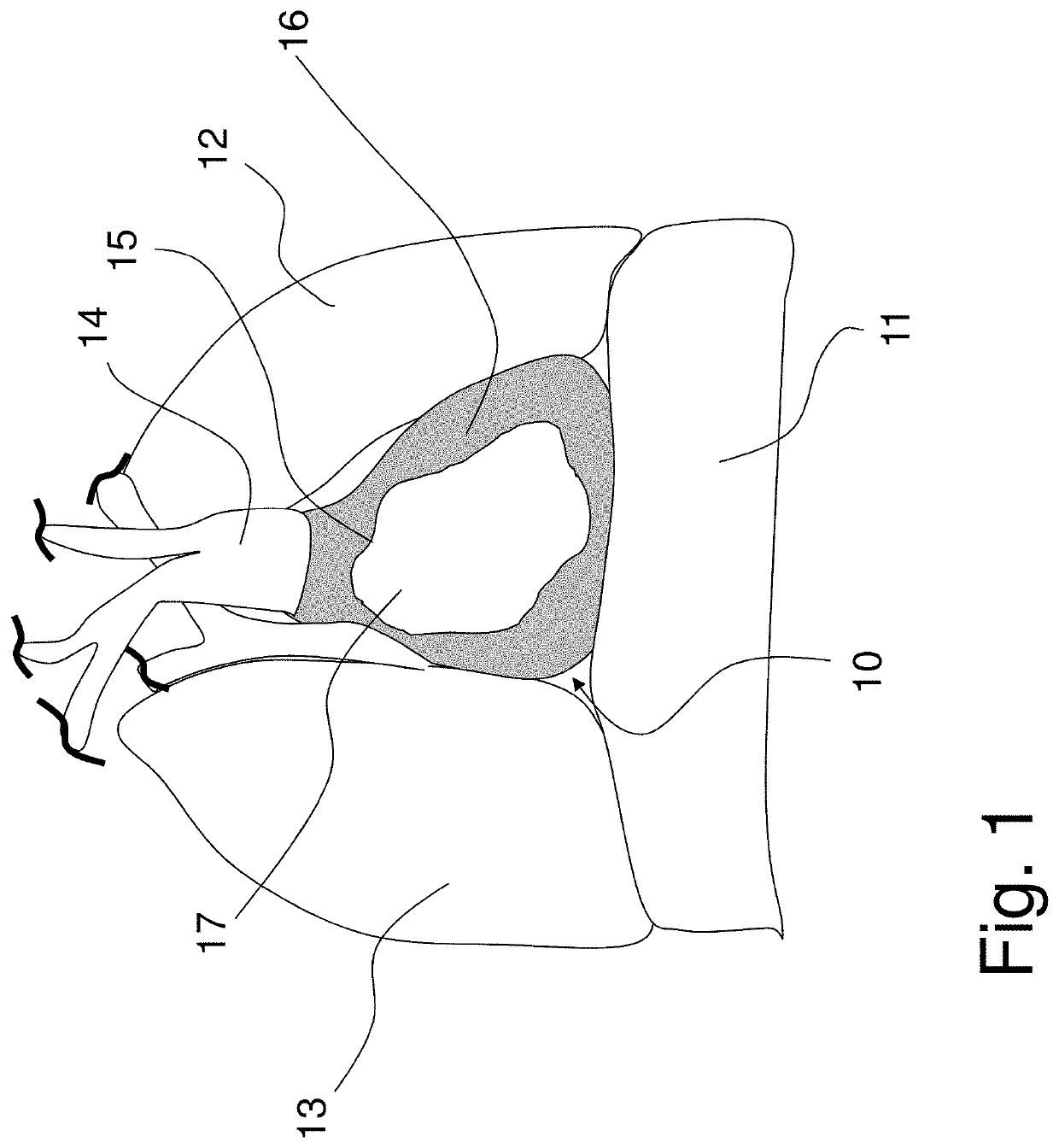Shaped epicardial lead and placement system and method
a technology of epicardial leads and shaped leads, applied in the field of epicardial leads, can solve the problems of long hospitalization time, large drawbacks of current epicardial leads, and invasive surgical approaches, and achieve the effect of improving heart beating function
- Summary
- Abstract
- Description
- Claims
- Application Information
AI Technical Summary
Benefits of technology
Problems solved by technology
Method used
Image
Examples
Embodiment Construction
[0045]Exemplary embodiments of the present invention are described in the following, with reference to the drawings. It should be understood that such embodiments are by way of example only and merely illustrative of the many possible embodiments which can represent applications of the principles of the present invention. Various changes and modifications obvious to one skilled in the art to which the present invention pertains are deemed to be within the spirit, scope, and contemplation of the present invention as further defined in the appended claims. The exemplary embodiments of the present invention described herein are not intended to be exhaustive or to limit the present invention to the precise forms disclosed in the following detailed description. Rather, the exemplary embodiments described herein are chosen and described so those skilled in the art can appreciate and understand the principles and practices of the present invention.
[0046]Referring to FIG. 1, an anterior vie...
PUM
 Login to View More
Login to View More Abstract
Description
Claims
Application Information
 Login to View More
Login to View More - R&D
- Intellectual Property
- Life Sciences
- Materials
- Tech Scout
- Unparalleled Data Quality
- Higher Quality Content
- 60% Fewer Hallucinations
Browse by: Latest US Patents, China's latest patents, Technical Efficacy Thesaurus, Application Domain, Technology Topic, Popular Technical Reports.
© 2025 PatSnap. All rights reserved.Legal|Privacy policy|Modern Slavery Act Transparency Statement|Sitemap|About US| Contact US: help@patsnap.com



